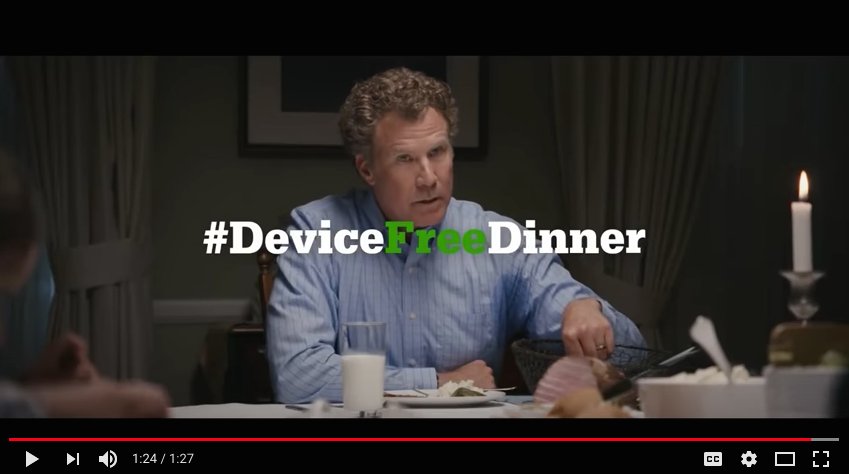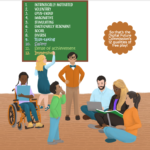Imagine you have a really open and ongoing conversation in the household about your relationships with technology. Maybe the conversation started as a formal weekly event around the kitchen table where everyone shows up to share, listen, and discuss—perhaps something like Tech Talk Tuesday.
Now, if you’re a Facebook user and you have a tween or teen, consider having a conversation in which you share your Facebook feed—you actually walk through it with your family members, noticing and disclosing how you feel about each post. Think of it as an Investigation.
Here is a screen shot from the top of my Facebook feed:

I appreciate these posts. I have worked at making my feed useful and supportive of my interests such as brain science, nature and children…it didn’t start out that way. It has taken work. For example, noticing how I felt using Facebook led me to delete the app from my phone and use it on only on my laptop. After your walkthrough, trade places (if your tween or teen uses Facebook or is interested in using Facebook). You can substitute FB with any other app you or they might be using. (If your child is younger, stay tuned—I’ll walk through Investigations with younger children in a future post. Meanwhile, read this new report by Common Sense Media on Media Use by Kids Age Zero to Eight. It’s worth reading.)
The key to this Investigation is simply noticing, and sharing what you notice…
Mindfulness is awareness that arises through paying attention,
on purpose, in the present moment, non-judgmentally.
—Jon Kabat-Zinn
We actually know a lot about media and what is good for us and good for kids. The Joan Ganz Cooney Center has led some of that research for decades. Research by Joan Ganz Cooney and her colleagues in 1966 led to the creation of The Children’s Television Network and Sesame Street.
A few posts ago I mentioned Jordan Shapiro’s exploration of styles of parental mediation and joint media engagement in this Forbes post from 2013. His post was based on this 2011 report—”The New Coviewing: Designing for Learning through Joint Media Engagement”—from the Joan Ganz Cooney Center. The report updated the center’s work on the value of coviewing television with kids to include new forms of media that were starting to impact families heavily by 2011. They added the term “joint media engagement” to refer to…
“…spontaneous and designed experiences of people using media together. Joint media engagement can happen anywhere and at any time when there are multiple people interacting together with media. Modes of JME include viewing, playing, searching, reading, contributing, and creating, with either digital or traditional media. JME can support learning by providing resources for making sense and making meaning in a particular situation, as well as for future situations.”
I think it’s a useful term for today. I appreciate the focus on connected engagement that it brings…
Conversation Catalyst: After putting the devices in a basket Will Ferrel style for a family dinner, pick them up after you eat and decide together to do something with technology that none of you have ever done before. I have no idea what that might be. Let your kids take the lead.

Scroll video to :57 minutes for my favorite Will Ferrel/Common Sense Media PSA
Next up…What facilitates arriving at a “really open and ongoing conversation in the household about your relationships with technology” as I asked you to imagine in the first sentence? I will talk about that in my next post.


